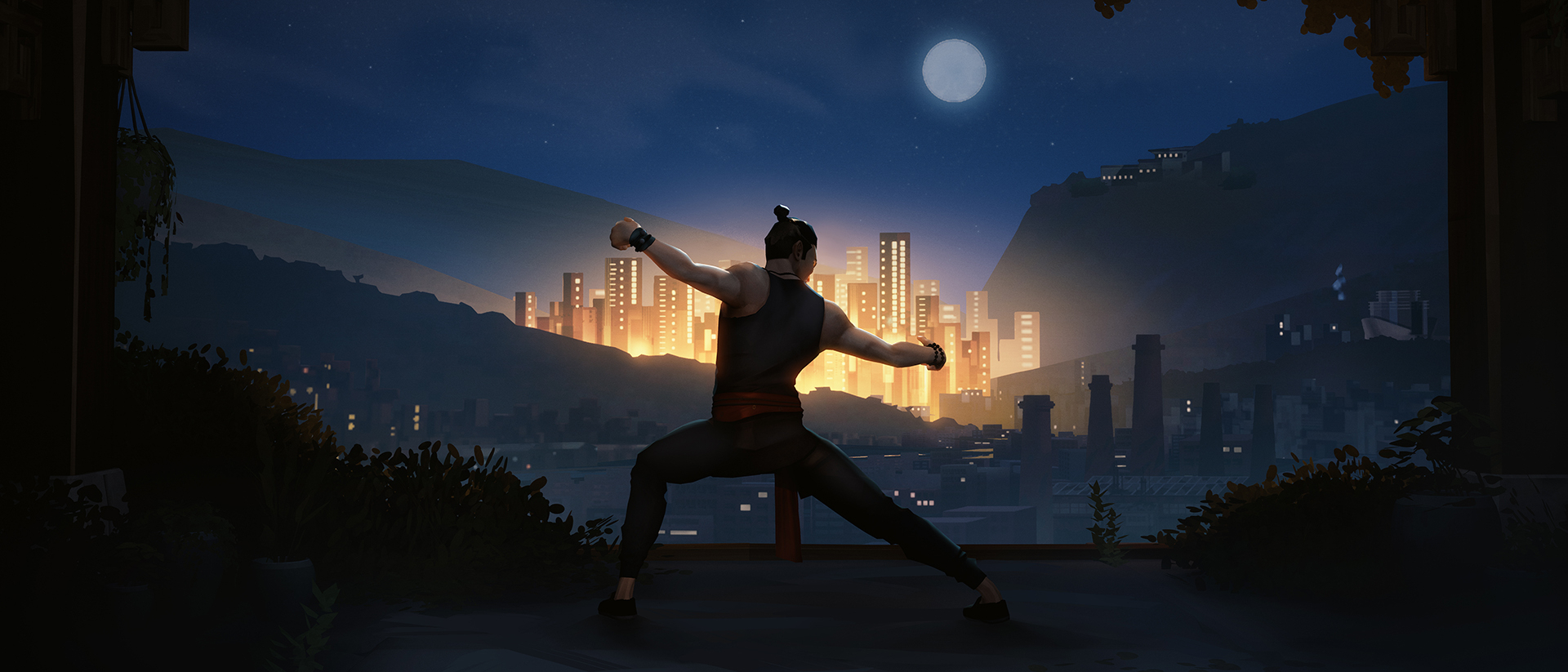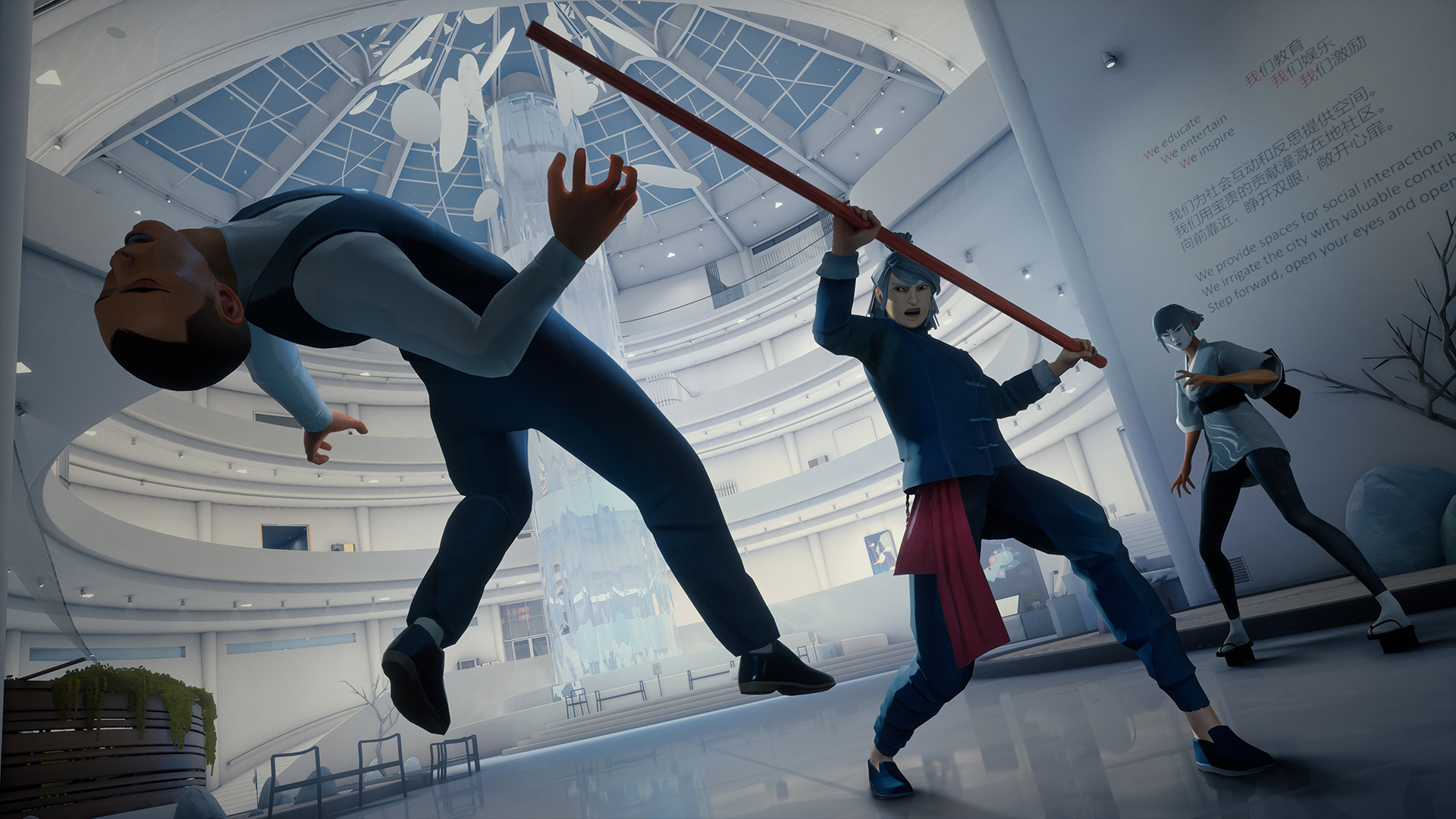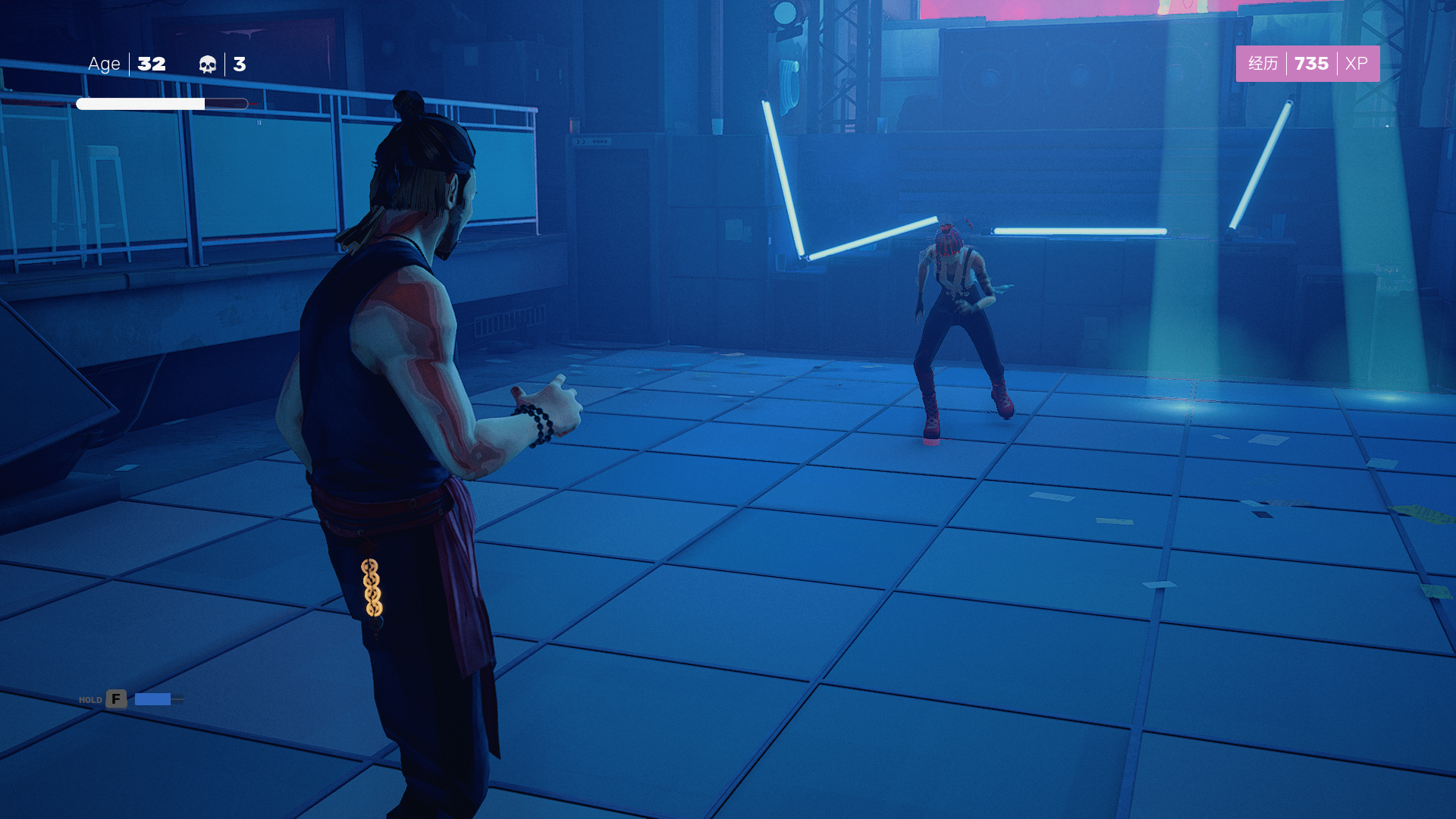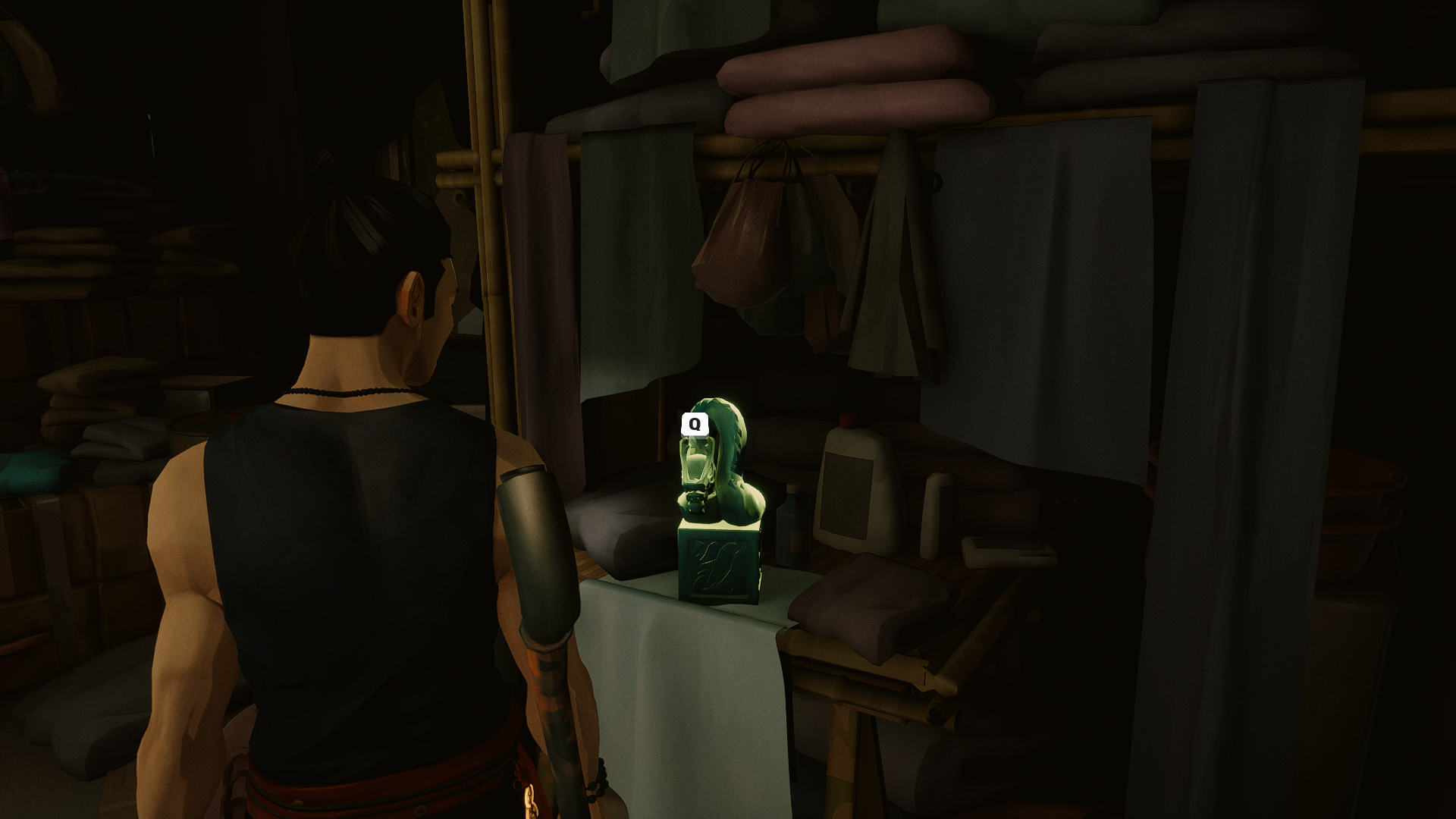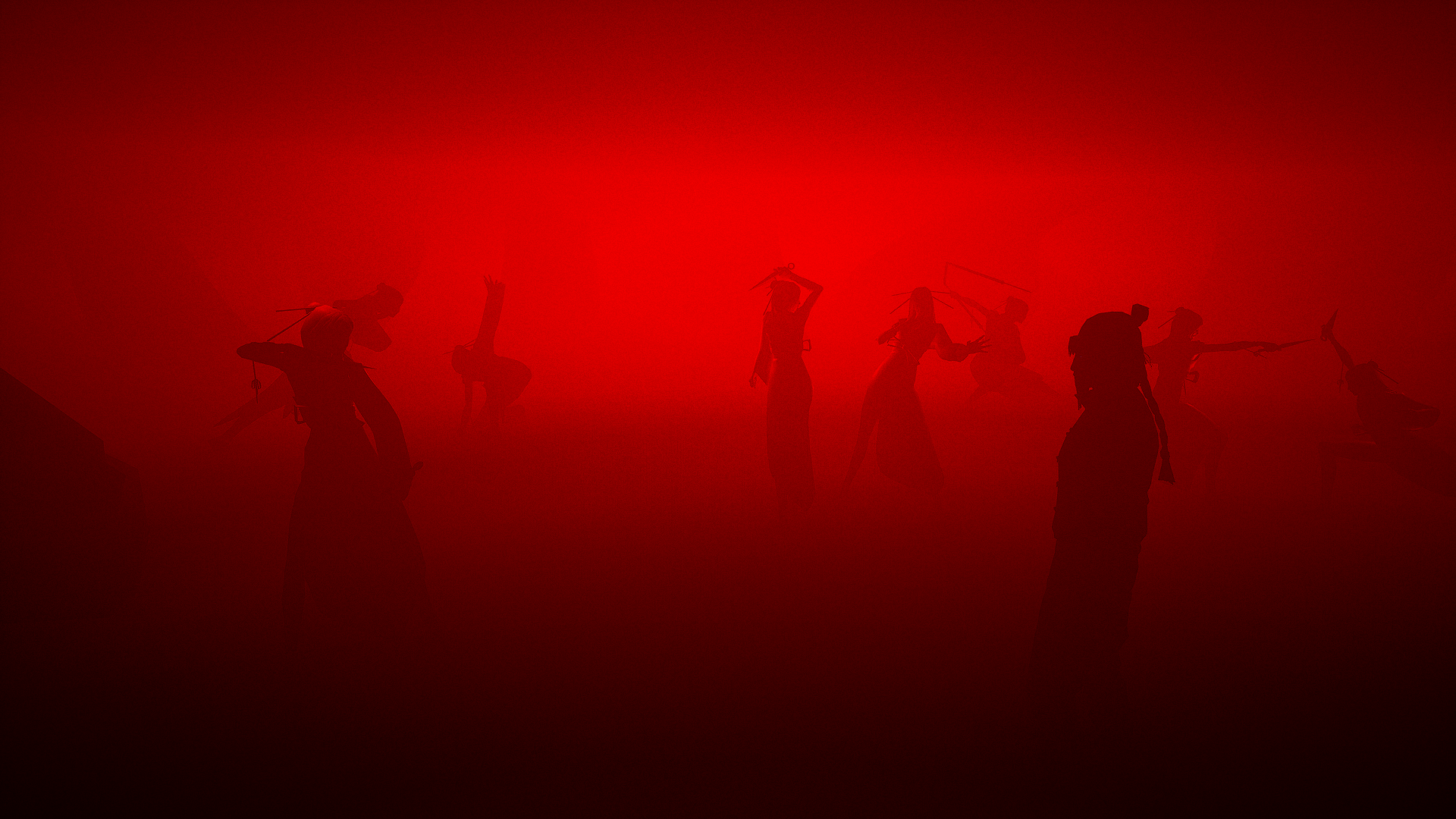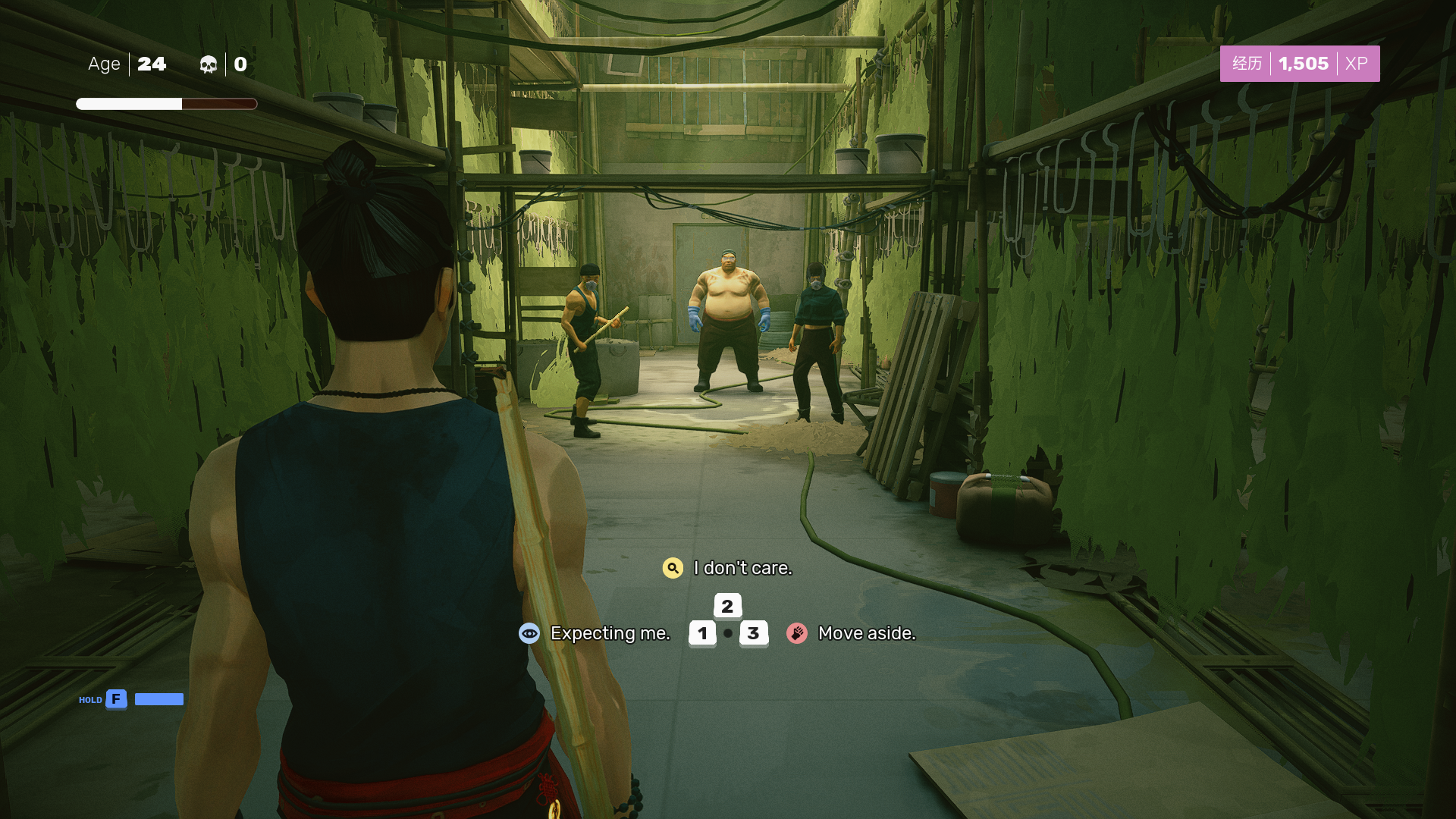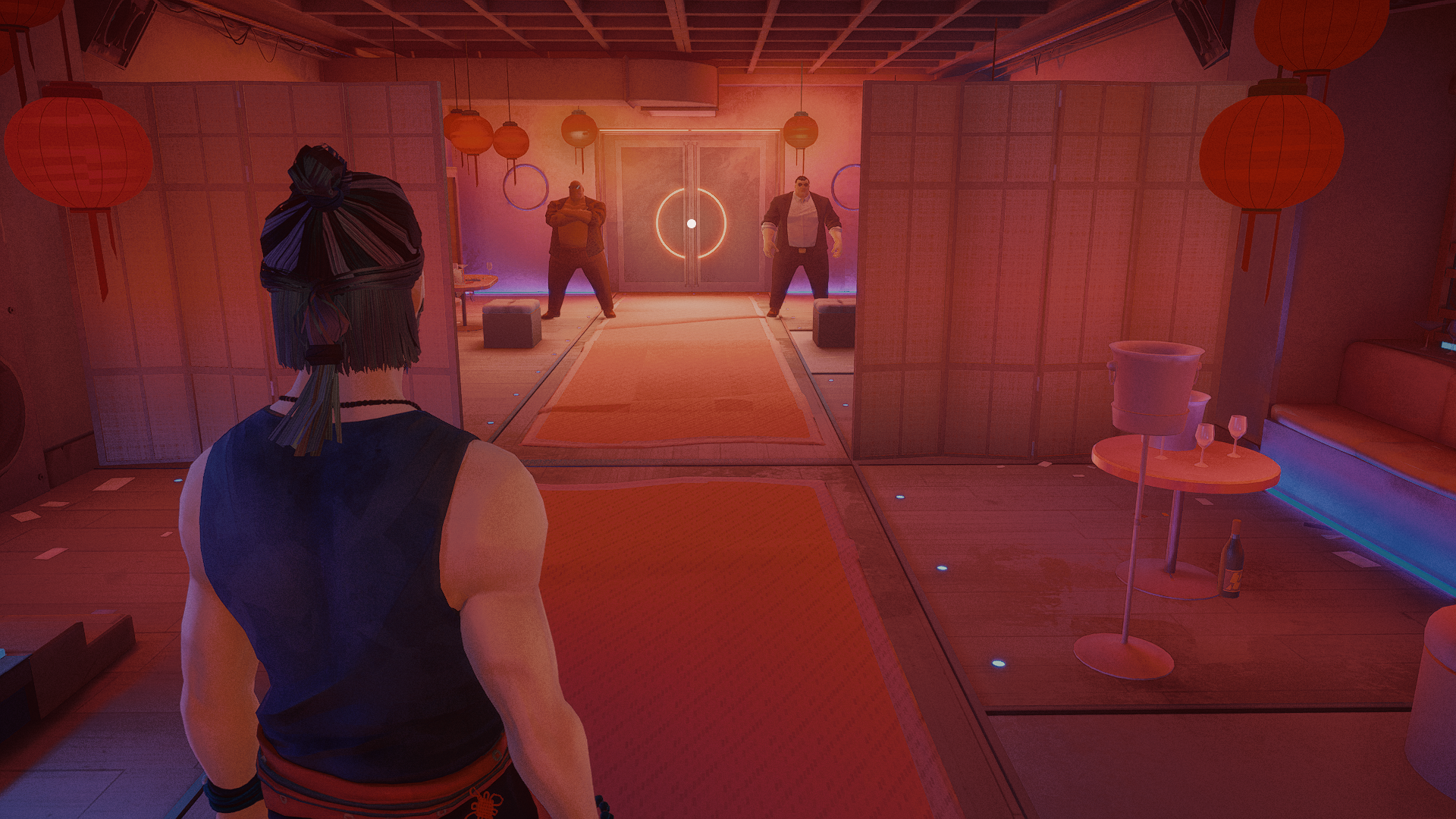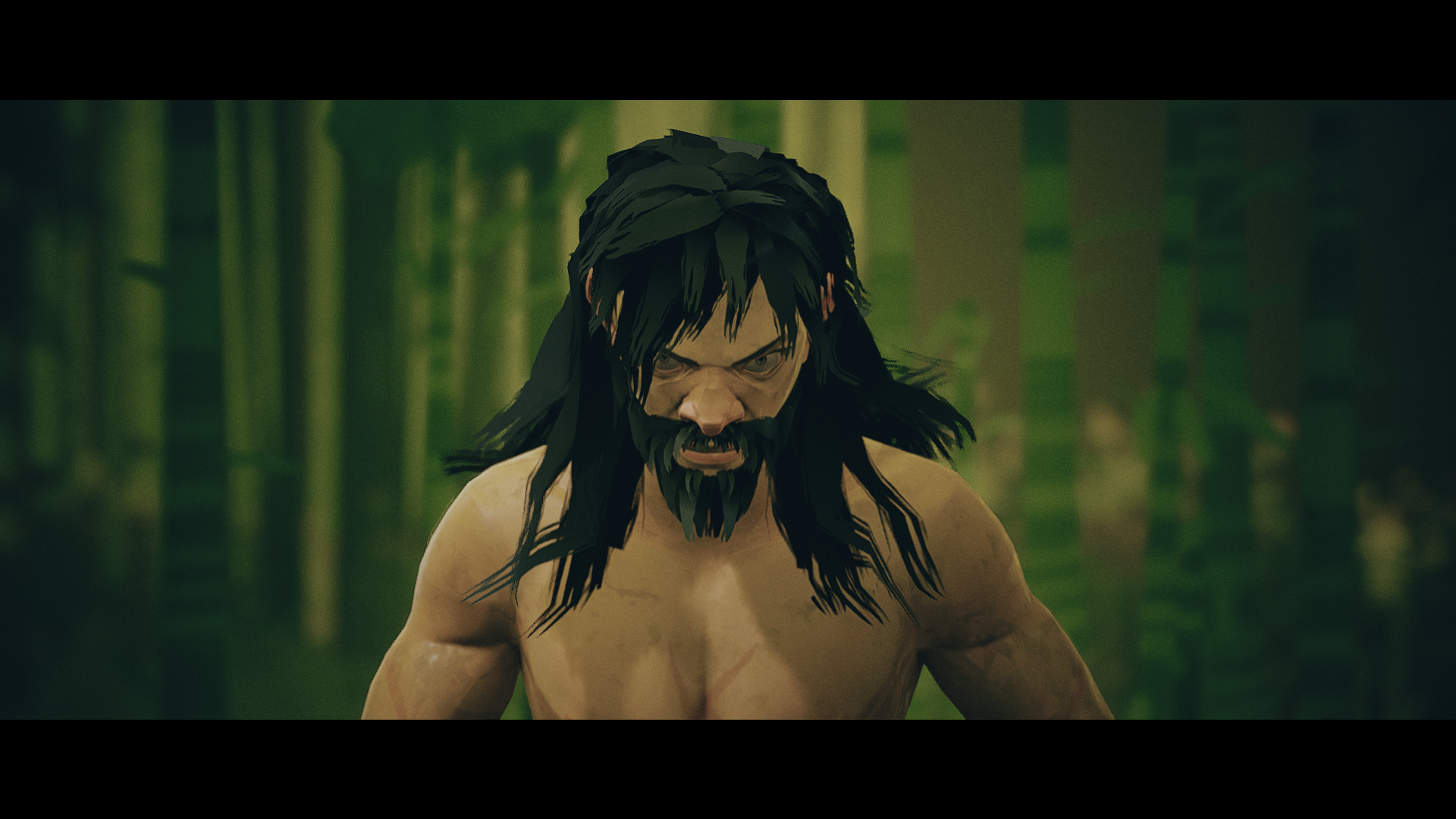Laptop Mag Verdict
Sloclap’s Sifu takes beat ‘em ups up a notch with thrilling Kung Fu combat, creative level design, and a clever age mechanic that will have players persistently wipe the floor with hordes of fighters.
Pros
- +
Grounded, satisfying combat
- +
Engaging story
- +
Intriguing level design
- +
Smart age mechanic
- +
Replayability
Cons
- -
Learning curve can be tricky
- -
Some unlockables aren’t useful
Why you can trust Laptop Mag
As soon as you boot up Sifu, expect to be greeted with stylish, film-esque visuals, and to be thrown into satisfying Kung Fu action instantaneously. You get the sense that you’re taking control of a martial arts master out for revenge. And yeah, he’s pretty badass.
Sloclap’s beat ‘em up action-adventure takes a number of twists and turns from there, but this introduction perfectly captures how the rest of the game plays out. That isn’t a dig at Sifu’s repetitive nature; on the contrary, the developers know gamers are here for an explosive, yet grounded Kung Fu experience and they’ve delivered the badassery in spades.
Sifu could have been a run-of-the-mill action game with interesting fighting mechanics in the same vein as Sloclap’s last game, Absolver. But much like the game’s theme of mastery through practice, the developers have honed their skills. Speaking of, honing my skills to get through this game was frustrating yet rewarding, as Sifu’s learning curve can take time to get used to. That’s part of the fun, though, and heading back to pulverize a horde of foes that once floored me never gets old.
Available on PC via the Epic Games Store, PS4 and PS5, Sifu is one of the best PC games and best PS5 games to come out this year.
A dish best served old
I adore the way Sifu’s story unfolds along with the gameplay right from the get-go, including the opening credits teaching you how to do the fundamentals on your character’s eventual threats. This is a story ripe with revenge, with your character exploring different destinations of those who wronged them, with five on the hit list.
It follows the story of a Kung Fu student (male or female) hunting down the murderers of their family, with their only aid being a special pendant that allows them to resurrect after being taken out. The catch? The student ages every time they get back up. This is both a gift and a curse, as aging offers more experience and greater damage, but decreases health. The whole game takes place over the course of a day, and it’s eerie to think the student can age over 50 years — from 20 to over 70 — in that space of time. However, it lends to the student’s drive to preserve their family’s legacy, and also makes players want to preserve as much life as they can.
Throughout the campaign, there are numerous callbacks to phenomenal fight scenes in the best fight movies, including a hallway brawl where the camera pans to the side similar to director Park Chan-wook’s Old Boy and a grand fight in a snow-ridden landscape that’s similar to O Ren Ishii’s duel against The Bride in Quentin Tarantino's Kill Bill. It all runs fluidly and doesn’t feel forced as Sifu has more original iconic moments of its own.
The game visits a number of different environments; from shady, abandoned warehouses filled with a “Purple Mist” drug to a bizarre nightclub where everyone knows kung fu (that reference had to come up eventually). But there are also more supernatural environments as you progress through the story that create stunning set pieces, all thanks to the unique powers of the five main villains.
Without spoiling too much, this includes Fajar, a botanist with the ability to grow plants at an accelerated rate, the staff-wielding Sean who inflicts his (literal) fiery rage, Kuroki the artist with a trippy museum, CEO Jīnfèng and her forever-changing corporate building and healer Master Yang. I was concerned the supernatural elements would interfere with the otherwise realistic combat, but they instead added to the grandeur of the environments. I enjoyed this, as just because I started in a nightclub didn’t mean I was going to end up in one by the end of the stage.
Sifu isn’t a graphically demanding game, but the cel-shaded, stiff graphics match the tone of the game. It lends itself to the grounded, swift movements of each strike, from the character to the enemies.
Mastery, in time
Controls are minimalist yet vast, making the tutorial integral to both gameplay and the story as a whole. Move sets are easy to pick up; square for light attacks, triangle for strong, and L1 to deflect or guard. But bringing them all together results in a complex set of moves, especially when the environment also comes into play. I got a kick out of using the environment to throw enemies off guard, and the execution is stellar. For example, lobbing a stool with a flick on a foot ruined an otherwise dangerous enemies’ setup, leaving the opponent open to an IP Man-styled hundred punch blow.
It all goes quite easily until a random group of enemies didn’t go down with the simple combos I was used to. This is where the hyped age mechanic comes into play, giving you a death tally to add to your age and gain skills using XP you’ve earned throughout the fights players have endured so far. These skills are only temporary though, and you’ll need far more to unlock them permanently on a run.
So, when you die once, you get a year added to your life. The death tally keeps going up until you defeat a special, more adept type of enemy (more on that later). Once you do, your age stays the same, but the tally is reduced by one. It’s an interesting mechanic, adding to the pressure of making your way through stages (and replaying them) with as few deaths as possible. And, if you do get taken down, to know where to take down special enemies to reduce that death tally. After all, with each decade, your damage increases, but your health decreases. Before I knew it, I was 75!
Sign up to receive The Snapshot, a free special dispatch from Laptop Mag, in your inbox.
When you beat a stage, you may think “thank the Kung Fu lords, I was shy of being 70-years-old after beating that. Now I’ll go back to my original age.” Nope. You stay the same age you beat that level when progressing to others. This is daunting when first starting out, as the only way to reach your starting age of 20 is by restarting from square one: the first stage.
Each run ends when you hit over 70, bringing you back to the start of that particular level to beat everyone up all over again. Well, not everyone, as you can pick up keys that act as shortcuts through each level. With these shortcuts, heading back to the start isn’t as daunting anymore, as it makes reaching the next stage at a younger age a lot easier. That, and players will start to learn the ebb and flow of combat.
Along the way, you’ll find “Rewards” in the form of idols, which allow players to increase a stat such as health gained on takedowns, structure reserve for blocking, or weapon durability. It allowed me to build the character I know I would play well as, but health is an obvious go-to. However, there are certain skills that can only be upgraded under certain conditions, forcing you to unlock them first.
For example, upgrading weapon durability can only be done before the age of 25. Afterward, you won’t have access to it. Other unlockable upgrades are more forgiving, including one’s tied to your score or experience points. Although, you’re only allowed one upgrade per idol, so you may lean towards the ones associated with age before you’re no longer able to use them. This is a tad annoying, but also forced me to think about what I really needed upgrading.
Other unlockables include skills to add to your moveset, such as different combos, counterattacks, and “Focus” abilities. That last one can be particularly useful, as it almost acts as a get-out-of-jail-free card to get a few hits in before you need to fight an intimidating foe for real. Focus builds up with each successful hit, parry or dodge, and leads to a special move such as a heavy sweep to trip enemies or jab them in the eye to temporarily stun them. I stuck with the heavy sweep move as it only cost one bar of focus, but moves that cost two bars could really thin the herd.
Unfortunately, there were some skills that didn’t come in handy at all, such as grabbing a thrown object and returning it to sender and countering an enemy attack when you’re on the floor. Enemies didn’t throw objects that much, and I could just dodge them anyway, while I also always got a free kick in when getting off the floor, meaning I had no need to wait to counter. It was annoying to spend all my experience points on a skill that I rarely used, especially if there was an ability that would get me out of a jam.
No one left standing
The fodder enemies you fight along the way may not look as intimidating as the menacing foes on the character’s hit list, but dismissing them as general grunts proved to be a vital mistake. Many can count as being a way to fill up your health bar, as each takedown grants a slight portion of health. However, some will catch you off guard by looking like the others, but secretly being a formidable opponent that requires changing up the usual combo.
I was put in my place a few times when enemies caught a second wind, which happens when they break out of getting taken down. They regain their health and structure, which can be distressing when I thought that was another enemy I didn’t have to worry about. I’m a fan of this combat design, as it kept me on my toes (fingers is probably more fitting) not knowing the true potential of what would otherwise be expendable thugs.
But they also don’t know your potential. Knowing these “special” enemies are around gives more reason to beat them to a pulp, as taking them down also takes a token of death off the tally. It can be easy to build these up, which isn’t ideal when you’re taken down once and age by five years. Some of these enemies are spotted as they have a special glow about them, so taking them down without taking too much punishment is a strategic move.
Plus, knowing what moves work on particular enemies, when to parry and when to dodge, along with knowing that weapons are your best friend had me eventually taking down the first set of enemies and bosses without losing years off my life. There’s a learning curve to master, which is extremely in tune with a game all about mastering martial arts through the passage of time.
While there aren’t many different enemy types, they can pick up different objects lying around that can change how they’re handled. For example, an easy grunt would pick up a bottle and throw it at me while I was trying to deal with another making full use of an iron pipe. There are bigger enemies that like to throw you around, those that are more tuned with intimidating staffs and more menacing weaponry. Some turn out to be mini-bosses, which easily knocked me down a peg or two.
Then there are the real bosses. The five on the character’s hit list can shave years off your life in no time and can seem impossible to defeat, especially on first attempts. However, it was extremely satisfying to take them down once I understood their patterns, and even more so without dying numerous times. Still, that didn’t mean I could be cocky when stepping into the ring with them as one slip up or bad run meant getting absolutely annihilated. Those looking for a flawless run or are trying to speedrun the entire game will find a great challenge in taking these guys out, and for more casual gamers, prepare to hone your skills.
Pricing and system availability
Sifu is available on PC via the Epic Game Store, PS4 and PS5 from $39.99/£39.99 on February 8, but you can pre-purchase it for $31/£31 on the Epic Game Store and play it two days early on February 6 or $35/£35 with a PlayStation Plus subscription. I played Sifu on PC, with my Asus ROG Strix Scar 17 (2021) sporting an AMD Ryzen 9 5900HX CPU, Nvidia GeForce RTX 3080 GPU, 32GB of RAM, and dual 1TB PCI m.2 SSDs. This is more than enough to handle the game’s requirements.
The recommended PC requirements include an AMD FX-9590 or Intel Core i7-6700K CPU, AMD Radeon R9 390X or Nvidia GeForce GTX 970 GPU, and 10GB of RAM. Minimum requirements include an AMD FX-4350 or Intel Core i5-3470 CPU, AMD Radeon R7 250 or Nvidia GeForce GT 640 GPU, and 6GB of RAM.
Bottom line
From the majestic Pak Mei Kung Fu moves our stoic protagonist performs against numerous imposing threats, to the little nods to iconic action movies in scenic levels, Sifu excels at making you want to come back for more. It also takes the genre up a notch with its stand-out age mechanic, which is both an integral part to the story and gives players different ways to tackle the game.
While some skills aren’t particularly useful and it’s repetitive nature may not be everyone’s cup of tea, Sloclap has captured the core principles of a great beat ‘em up and wrapped it all up in a stylish Kung Fu action adventure filled with vengeance and oh-so-satisfying hand-to-hand combat.
With thrilling Kung Fu combat, creative level design, and a clever age mechanic that will have players persistently wipe the floor with hordes of fighters, Sifu kicks off the year as one of the best beat ’em ups to sink your teeth into.

Darragh Murphy is fascinated by all things bizarre, which usually leads to assorted coverage varying from washing machines designed for AirPods to the mischievous world of cyberattacks. Whether it's connecting Scar from The Lion King to two-factor authentication or turning his love for gadgets into a fabricated rap battle from 8 Mile, he believes there’s always a quirky spin to be made. With a Master’s degree in Magazine Journalism from The University of Sheffield, along with short stints at Kerrang! and Exposed Magazine, Darragh started his career writing about the tech industry at Time Out Dubai and ShortList Dubai, covering everything from the latest iPhone models and Huawei laptops to massive Esports events in the Middle East. Now, he can be found proudly diving into gaming, gadgets, and letting readers know the joys of docking stations for Laptop Mag.
